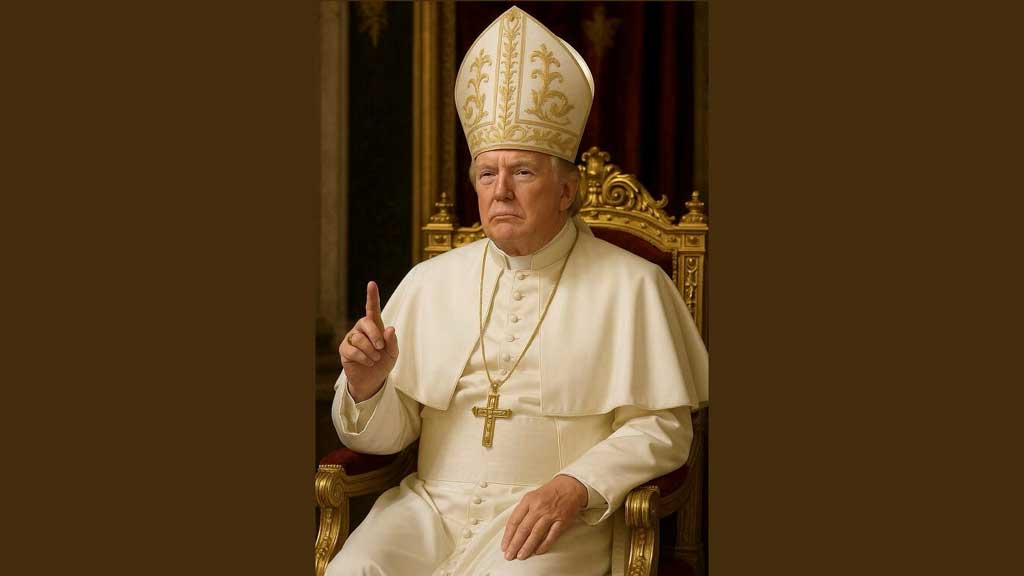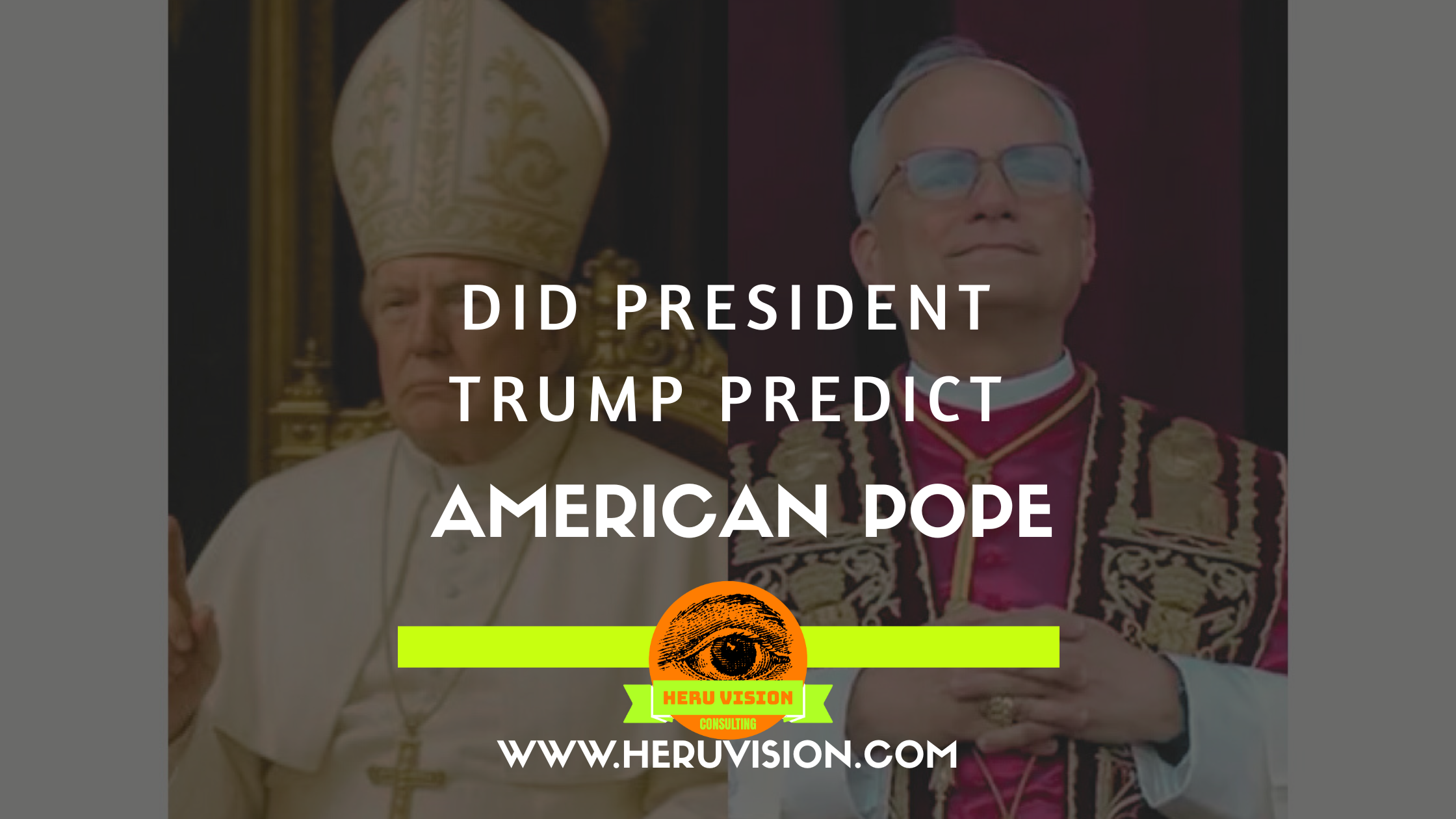The AI Pope Image and the American Pope: Trump, Controversy, and a Historic Election
In the lead-up to the conclave to elect a successor to Pope Francis, an artificial intelligence-generated image depicting President Trump in papal attire circulated online and was subsequently shared by his social media accounts in early May 2025. This event sparked a wave of reactions, ranging from amusement to outright condemnation, highlighting the increasingly complex intersection of digital media, political discourse, and religious symbolism.

AI image protraying President Donald Trump in Papal vestments.
The image itself portrayed President Trump in white and gold papal vestments, complete with a mitre and a prominent cross. It appeared on his Truth Social platform and was later amplified by the official White House X (formerly Twitter) account. This occurred shortly after the passing of Pope Francis and just days before cardinals convened in Vatican City to begin the solemn process of selecting the next leader of the Catholic Church.
President Trump, who is not Catholic, had made lighthearted remarks a few days prior, joking about the possibility of him becoming Pope. When questioned about the AI-generated image, he reportedly quipped that those offended “couldn’t take a joke” and claimed that “Catholics loved it,” adding that his wife, Melania Trump, found the image “cute.” He also stated that he had no idea where the image originated, suggesting it might have been created by AI.
However, this sentiment was not universally shared. The New York State Catholic Conference issued a strong rebuke, stating, “There is nothing clever or funny about this image, Mr. President. We just buried our beloved Pope Francis and the cardinals are about to enter a solemn conclave to elect a new successor of St. Peter. Do not mock us.” Several Catholic commentators and lay individuals also expressed their offense and disappointment, viewing the image as disrespectful to the late Pope and the gravity of the papal transition.
Then, in a historic turn of events, the papal conclave concluded with the election of Cardinal Robert Prevost of the United States, who took the name Pope Leo XIV. This marked the first time in the history of the Catholic Church that an American had been elected to the papacy. This event added another layer of complexity to the already controversial situation involving the AI generated image.
The incident and the subsequent papal election underscores several significant themes in contemporary society:
- The Power and Perils of AI-Generated Imagery: The ease with which realistic yet fabricated images can be created and disseminated raises profound questions about the nature of truth and representation in the digital age. In this instance, an AI-generated image quickly entered the public discourse, blurring the lines between reality and simulation.
- The Weaponization of Humor and the Interpretation of Intent: What one person perceives as a harmless joke, another may see as deeply offensive. President Trump’s defense of the image as humor did not resonate with many who felt it trivialized a significant religious moment. This highlights the subjective nature of humor and the challenges of interpreting intent, especially in the rapid and often context-deficient environment of social media.
- The Intersection of Politics and Religion: The image placed a prominent political figure directly within the visual symbolism of a major religious institution. This intersection is often fraught with sensitivity, particularly during times of religious transition and mourning. Critics argued that the image was a self-aggrandizing gesture that disregarded the solemnity of the papal conclave.
- The Differing Sensibilities and Cultural Contexts: Reactions to the image varied, reflecting diverse religious beliefs, political affiliations, and cultural norms. While some may have seen it as satirical or merely absurd, others viewed it as a disrespectful intrusion into a sacred process. The election of an American Pope adds another layer to these differing sensibilities, with some viewing it as a positive development and others approaching it with caution.
- The Role of Social Media in Shaping Public Discourse: The swift dissemination and amplification of the image through social media platforms demonstrate their power to rapidly shape public perception and ignite controversy. The official White House account’s decision to repost the image further amplified its reach and significance. This occurred just before a historic moment for the American Catholic Church.
- The Unforeseen Reality of an American Pope: In an unexpected turn, the visual of an American seemingly in papal attire, however artificial and controversial, now precedes the reality of the first American Pope. While the AI image was intended as a jest (according to its sharer), the subsequent election of Cardinal Prevost introduces an unforeseen parallel, albeit entirely coincidental. This raises questions about the interpretation of the earlier image – whether it now takes on a different meaning in light of this historic event.
Ultimately, the AI-generated image of President Trump as the Pope served as a flashpoint, igniting debate about the appropriate boundaries of humor, the ethical implications of AI-generated content, and the delicate relationship between political figures and religious symbols. The subsequent election of the first American Pope adds an unexpected dimension to this narrative. While the image was met with controversy, the reality of an American leading the Catholic Church marks a significant moment in religious history. The juxtaposition of the two events, though unrelated in their origin, offers a unique lens through which to view the evolving relationship between American culture, politics, and the global influence of the Catholic Church.

